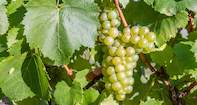Classic SA Grape
Probably one of the most familiar names among the myriad of varieties and wines out there, chardonnay is loved by wine drinkers and winemakers alike. It is easy to grow, which is why it has become one of the most widely grown white grape varieties in the world:

from France’s cold Champagne region to South Africa’s warm Western Cape hinterland, from England to Chile to Bulgaria. It does well in most soil types and is a fairly vigorous grower, ripening early in the season. The fruit yield is consistently generous and it easily achieves a high natural sugar level.
Chardonnay is regarded as one of the ‘classic’ wine grape varieties. This is partly because it is so versatile in the many styles of fine wine that can be made with it. On top of this, when fermented and/or matured in oak barrels or given a second fermentation in bottle, it is capable of some of the finest wines in the world.
As a major component of French champagne - which accounts for as much as a third of the total plantings of chardonnay in France - it provides elegance and structure. But perhaps the most famous expression is found elsewhere in France, in the region of Burgundy, so much so that when one speaks of White Burgundy, it is a chardonnay.
Here the variety's response to oak-barrel fermentation and maturation is a benchmark for most New World chardonnays, particularly in South Africa with its strong French winemaking heritage. Just north of Burgundy, in Chablis, the same grape has produced another benchmark; talk about Chablis and you will be referring, again, to chardonnay, in this case primarily an unoaked wine.
By Wendy Toerien
 Chardonnay accounts for what may seem a meagre percentage of the total Vitis vinifera plantings in South Africa, fluctuating between seven a...
Chardonnay accounts for what may seem a meagre percentage of the total Vitis vinifera plantings in South Africa, fluctuating between seven a...